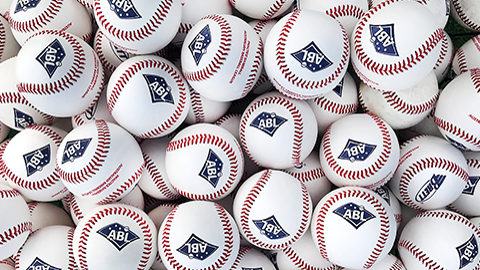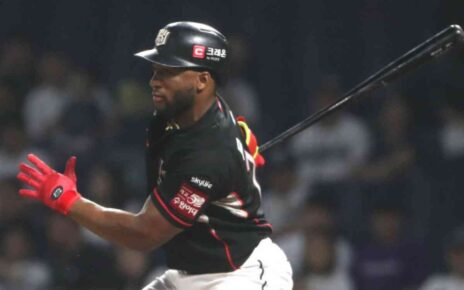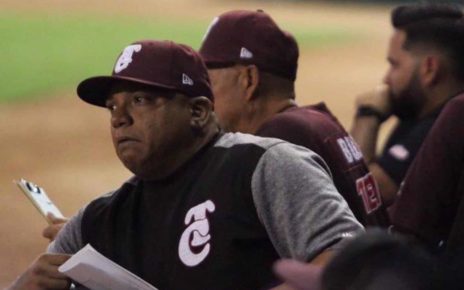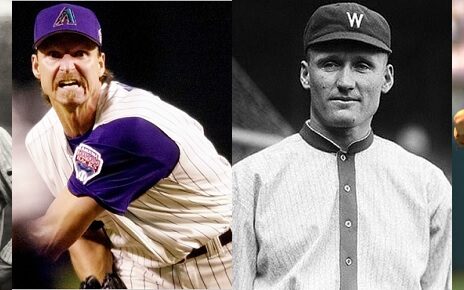Australia has a reputation as a nation that loves its sports. Athletes from Australia excel at any number of sports, with a decided focus being on those that take place in the typical American summer. They have produced countless winners in individual sports like tennis, golf, swimming, track & field, etc. In team sports, they are most known for volleyball, rugby, soccer, cricket, Aussie-rules football, and basketball. The one sport they are not well known for is the sport this website is interested in; baseball.
Baseball has been around in the Land Down Under since the 1850s. The local story goes that American gold miners brought the game with them when they migrated to the Pacific continent. In between panhandling gold, they would play pick-up baseball games. America’s pastime knew no boundaries in an age where Americans were spreading their wings abroad. Challenges against cricket clubs were made, and though cricket usually won the game of baseball became something of a curious oddity. In the late 1880s, A.G. Spalding himself brought his Chicago White Stockings to Australia for a barnstorming tour.
Baseball never truly caught on though, not like any of the other sports listed above. There were amateur and semi-pro leagues, but nothing all that serious. American teams would venture into Australia to play exhibitions in front of large crowds. They remained a passing fancy though, never coming close to replacing cricket, swimming, and the like as the true kings of Australian sport. Then the 1980s came about and a groundswell of support for baseball began to emerge from the thick of the brush.
The first Australian Baseball League took the field in 1989 and lasted until 1999. The league was fairly popular with its fans, but never made any sort of mainstream splash. It showed where it mattered most, as the league operated with annual losses somewhere around $2 million. Still, for ten years baseball fans in Australia got their fix of a real professional league delivering baseball at the equivalent of a Single-A level. Ultimately that league could not overcome the financial hardships they annually accrued and it folded after the 1999 season.
Fast forward to 2010 and professional baseball found its way back to Australia. The inaugural 2010-2011 season of the relaunched ABL featured six teams: Adelaide Bite (Adelaide Giants beginning this season), Brisbane Bandits, Canberra Cavalry, Melbourne Aces, Perth Heat, and Sydney Blue Sox. The Heat and Bandits were the only holdovers from the original ABL. The season format had been slightly changed to a November-January half-season schedule. The teams played three-game series on the weekends against one another in the first year. The second-year that was switched to four-game series over the course of Thursday through Sunday.
The key difference with the relaunched and revamped ABL was that the league was centralized. Teams were owned by the league, but more importantly, the ABL was a minority owner in the league. Major League Baseball was the majority owner, at 75%. This essentially made the ABL an unofficial extension of Minor League Baseball and allowed various major league teams to send prospects to Australia for winter ball. For MLB the idea was simple, funnel money into the ABL, build the game across the country, and expand MLB’s global scope.
The idea that MLB had was good, but unfortunately, they left out one key ingredient, patience. By the end of the 2014-2015 season, MLB had grown frustrated with the lack of growth of baseball in Australia. None of the baseball stadiums the teams play in are large, but they weren’t exactly drawing sellout crowds for those stadiums. Attendance fluctuated on a team-by-team and year-by-year basis. There were averages as low as the 700s per game, and as high as the 1,100s per game. For the ABL these were decent numbers, the beginnings of forming a strong fanbase. For MLB they weren’t enough, not anywhere near enough. When the 2016-2017 season started MLB had pulled out of the ABL, leaving the ABL itself with 100% ownership of the league.
There were rumblings at the time, I remember them well, that the departure of the MLB and its money would be the death knell of the ABL. To be fair, running the ABL in a post-MLB landscape has been difficult for all those in the upper management of the ABL. They never gave up, and they started to try new things. Corporate sponsorship became a big part of the league. The league itself is coming off of a 2018-2019 season where they were sponsored by Brut, teams have taken on sponsors, and jerseys can have advertisements on them. Small steps, but steps that helped to bring revenue into a cash-strapped league.
There remained one glaring problem with the ABL turning the corner into a completely viable league; television. ABL games are not broadcast on local TV markets in Australia. Nor are ABL Games broadcast with any regularity on any sports network in Australia. At this time the only sort of television market presentation that the ABL has been able to muster is one game every Sunday, the All-Star game, and the Claxton Shield series (the ABL’s championship series). Games are broadcast on some local radio networks, but the bulk of the ABL’s media presence is found on their YouTube channel, ABL TV.
I personally love being able to go to ABL TV and watch a game either live or the archived version later in the day, my time. What is good and accessible for me isn’t necessarily good for the league. The ABL struggling to get on any sort of local or national network means that lots of advertisers are still hesitant to take up with them. It also means that the league can’t pay the players as much and thus they fail to attract as many big Australian and foreign names as they would like. ABL TV works in the present, but for the league to have a future they need to figure out how to monetize the game broadcasts.
The 2018-2019 season saw some changes to the ABL. Namely two new teams were added to the mix; the Auckland Tuatara and the Geelong-Korea (Though associated with Korean talent, Geelong play their games in Geelong, Australia). The Tuatara is a New Zealand based team, and that represents a huge step forward for the league. Whether it will pan out is anyone’s guess. Attendance was not good for the Tuatara, but they will be playing in brand new North Harbour Stadium this season and that offers hope for far more ticket sales. What the two teams represent though is positive movement from the league. Some of the Tuatara were broadcast on Sky New Zealand while Geelong had a fair number of their games air on MBC Sports Korea. Based on all the information I have seen that trend is expected to continue this season.
The focus of the ABL has always been on local Australian talent with a nice mixture of independent league ballplayers and MiLB prospects. Geelong represents something different. Their entire 25 man roster is from Korea. The intent with the Geelong club is clear, they are a bridge to the Asian baseball market. ABL CEO Cam Vale has made numerous statements about the importance of the league forming a lasting connection with the Asian continent. Geelong is the first step in forming that connection.
The 2018-2019 season will see the ABL stick with some big changes they made last year. Namely, a salary cap of $100,000 per team and a different way of handling foreign players. No longer is there any limit to the number of foreign players a team could have, rather there is a point system based on how much prior professional experience a player has. MLB teams still send over prospects for winter league experience. So do teams from Nippon Professional Baseball, Chine Professional Baseball League, and the Korea Baseball Organization. Because these players are generally younger. They have very little experience and that means they can take up roster space without costing their ABL team too many points.
The goal of the ABL is still to showcase Australian talent, and the league remains predominantly Australian player based. The majority of experienced players are from Australia. Outside of Geelong, the majority of players on every team are homegrown. The ABL puts Aussies first, and this has been a boon to the league. This approach has benefited the international team as their ranking on the world stage has improved as Australian players get more experience in the league.
The ABL is in a state of flux at home and remains a curious oddity to the international baseball audience. There are many reasons for the lack of awareness of the ABL throughout the rest of the world. If you are American you’d have to make sure to be up between midnight and two in the morning to hope to see the start of a live game. Stat geeks like myself don’t have an abundance of data to operate from. This isn’t the biggest of issues, but it does create an obstacle to the universal recognition of the league. However, the biggest hurdle for the ABL is the idea that it simply isn’t a league where good baseball is played.
I’ve watched plenty of ABL games in the past three years. In that time I managed to become a huge fan of the Brisbane Bandits right as they began their stretch of winning four consecutive Claxton Shield’s. There is plenty of quality baseball to be found in the ABL. It’s not MLB or one of the higher-level foreign or MiLB leagues. It remains at the Single-A level skill-wise, but think more of a High-A team than a Low-A team. That means you will see your fair share of errors in the field, bad baserunning, lucky hitting, and more. You’ll also see exciting baseball with plenty of offense. The rather flat and open geography of most of the stadiums lends itself to more offense. So does the skill level being that of High-A, but that is not a bad thing by any measure. ABL games are fun, there are important prospects in action, and the more time I spend watching the league the more I enjoy myself.
I’m not sure what the future of the ABL holds. What I can tell you is that it is a professional baseball league that is trying to make a name for itself beyond streaming on YouTube. Maybe the Asian expansion will work out, maybe it won’t. Those behind the ABL are trying though, and they are offering weekly baseball that anyone can watch during a time when baseball fans are looking for more baseball to watch. In the ABL Australia has a league with plans to change the local baseball landscape and become better known on the world stage. November 21st baseball begins anew in Australia and it’s well worth taking the time to watch.
Lead photo courtesy of Unknown – ABL.com




